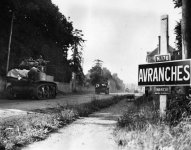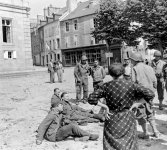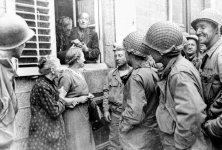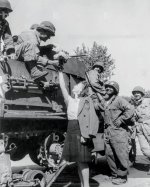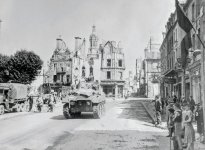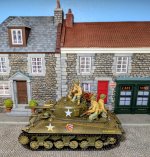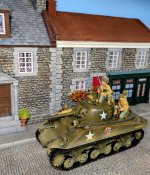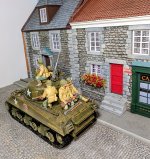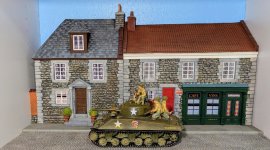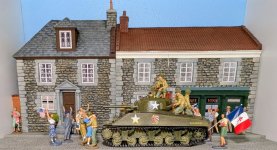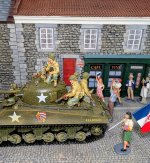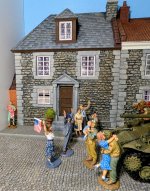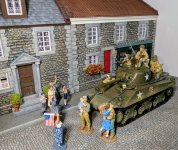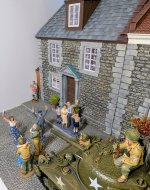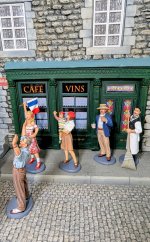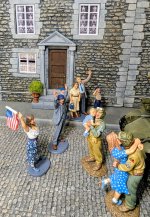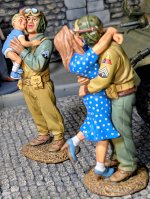mestell
Colonel
- Joined
- Feb 12, 2008
- Messages
- 9,311
A new shelf display in the works.
BACKGROUND:
The liberation of Avranches in July 1944 was a pivotal moment for the Allied advance during World War II, as it led to a breakout from the Normandy beachhead. American forces, under the command of General George S. Patton, captured the town and secured a bridge over the Sélune River, allowing the Third Army to pour into Brittany and the rest of France.
Following the D-Day landings on June 6, 1944, the Allied advance was bogged down for weeks by fierce German resistance and the dense hedgerows, or bocage, of the Normandy countryside. To break the stalemate, Lt. Gen.l Omar Bradley devised Operation Cobra. The plan called for a massive bombing of German lines west of Saint-Lô, followed by an aggressive ground attack.
On July 25, 1944, after a devastating aerial bombardment, the U.S. First Army began its ground assault. The American armored divisions quickly exploited the gap created in the German defenses. The American advance was swift and overwhelmed the German forces. Coutances was taken by July 29th. By July 30th, elements of the U.S. 4th Armored Division, spearheaded by the 37th Tank Battalion, were only a few kilometers from Avranches. Local intelligence suggested the Germans were not heavily defending the city. On July 30 and 31, American forces liberated Avranches, securing the crucial Pontaubault bridge over the Sélune allowing Patton's army to continue its push, turning Avranches into the "Avranches Breakthrough".
With Avranches secured, Patton's Third Army was unleashed, and the Allied forces were able to advance rapidly eastward into France, eventually liberate Paris
Period photos of the Liberation of Avranches:
BACKGROUND:
The liberation of Avranches in July 1944 was a pivotal moment for the Allied advance during World War II, as it led to a breakout from the Normandy beachhead. American forces, under the command of General George S. Patton, captured the town and secured a bridge over the Sélune River, allowing the Third Army to pour into Brittany and the rest of France.
Following the D-Day landings on June 6, 1944, the Allied advance was bogged down for weeks by fierce German resistance and the dense hedgerows, or bocage, of the Normandy countryside. To break the stalemate, Lt. Gen.l Omar Bradley devised Operation Cobra. The plan called for a massive bombing of German lines west of Saint-Lô, followed by an aggressive ground attack.
On July 25, 1944, after a devastating aerial bombardment, the U.S. First Army began its ground assault. The American armored divisions quickly exploited the gap created in the German defenses. The American advance was swift and overwhelmed the German forces. Coutances was taken by July 29th. By July 30th, elements of the U.S. 4th Armored Division, spearheaded by the 37th Tank Battalion, were only a few kilometers from Avranches. Local intelligence suggested the Germans were not heavily defending the city. On July 30 and 31, American forces liberated Avranches, securing the crucial Pontaubault bridge over the Sélune allowing Patton's army to continue its push, turning Avranches into the "Avranches Breakthrough".
With Avranches secured, Patton's Third Army was unleashed, and the Allied forces were able to advance rapidly eastward into France, eventually liberate Paris
Period photos of the Liberation of Avranches:


